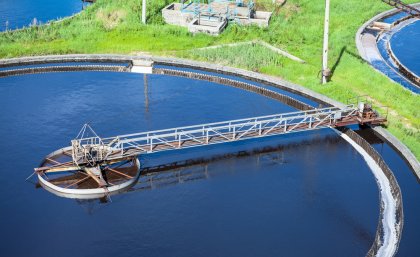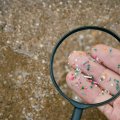
Methamphetamine residue found in the wastewater of a Queensland city has multiplied five times since 2009.
University of Queensland scientists from The National Research Centre for Environmental Toxicology (Entox) worked with Professor Wayne Hall of the Centre for Youth Substance Abuse Research to obtain the results.
“More than 1000 samples were taken from a coastal metropolitan city and a major inland regional city between 2009 and 2015,” Professor Hall said.
“Methamphetamine consumption increased 4.8 times in the metropolitan area over the timeframe, and 3.4 times in the regional area.
“This coincides with a study released last week, which showed an upsurge of more than 170,000 regular meth users across Australia between 2009 and 2015, to a total of 270,000 users nationwide.”
Professor Jochen Mueller of Entox and colleagues Dr Phong Thai, Ms Foon Yin Lai and Mr Jake O’Brien collaborated to build on previous insightful studies featuring waste testing.
Armed with knowledge about the ways that specific drugs are excreted, they used census populations for both the metropolitan and regional catchments to ascertain their results.
Methamphetamine consumption was measured in milligrams per day per 1000 inhabitants.
In 2009 the mean for the coastal metropolitan area was 234mg/day/1000 people, which increased to 1126mg/day/1000 people in 2015.
The study began a year later in the inland regional city, marked by a mean of 115mg/day/1000 people in 2010, which increased to 398mg/day/1000 people in 2015.
Professor Hall said the wastewater analysis alone did not determine whether consumption had increased because there were more users or because existing users were consuming more.
“However, when you view this together with other timely research, it is consistent with there being exponential growth in the number of users,” Professor Hall said.
A report on national estimates, led by Professor Louisa Degenhardt from the National Drug and Alcohol Research Centre at the University of New South Wales, was released last week.
Professor Hall was a contributor to the report, which gave the total number of regular users in Australia as 270,000 – greater than 2014 total population figures for Hobart (219,243) or Townsville (178,649).
Both the wastewater study and the study on Australian usage estimates have been published by The Medical Journal of Australia.
Media: Professor Wayne Hall, w.hall@uq.edu.au , +617 3365 5246; UQ Communications Robert Burgin, r.burgin@uq.edu.au, +617 3346 3035, +61 0448 410 364.
.jpg)










